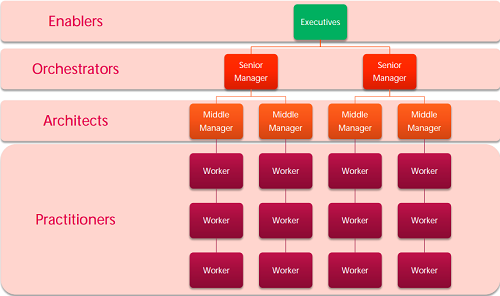

In operation since 1852, the American Society of Civil Engineers (ASCE) boasts over 145,000 members and a prestigious reputation as the nation’s oldest engineering society. That led Carrie Hane Dennison, Director, Web Operations & Strategy, to expect that she would address content strategy right away when she stepped into her role last year. Instead, she uncovered something that many long-standing organizations still often lack—a web presence not quite ready for the web.
Shifting gears, Dennison instead began to redesign the website, introduce content strategy and user experience concepts, and essentially become a change agent within the organization. Luckily, the organization knew it needed to move forward with a new website and content strategy. In this interview, Dennison shares some insights particularly relevant for large organizations that may not have implemented any content strategy and do not know where to begin. She talked to us about essential first steps, the art of getting buy-in through “change leadership,” and the role of “strategic nagging” to reinforce new yet potentially disruptive content ideas within an organization.
What was your initial assessment of ASCE’s content challenges, and what surprised you?
As a sizable and established organization with about 250 employees, the ASCE lacked a real content strategy, governance, and underlying architecture for their website. I approached the first month like a discovery phase of a consulting project by interviewing staff and talking to my five-person content team. After my initial discovery work, I found that the organization created some really good products and content but they weren’t getting properly translated to the web. The website offered too much content. Plus, the information architecture didn’t make any sense, people struggled to find content, and a lot of duplicate, inaccurate, and old content existed. Yet, simple requests for website changes were difficult to make. To make a change, the entire website would need to change. Based on this analysis and my previous consulting experience, I told ASCE that we needed to start over.
Given an organization starting with little to no content strategy, where did you begin? What were the first and most important building blocks to tackle?
We immediately put some basic governance in place. I created an online style guide and editorial guidelines, and then conducted training sessions instead of just handing the style guide off to people. By participating and asking questions, people understood the guidelines more and the governance stuck better. As the first guidance of this kind ever issued at ASCE, many people welcomed it—especially the different editors of our publications. Talking about the website as a publication helped people understand that it needed standards and governance like our magazine.
Typically after instituting basic governance, I then tell organizations to conduct a website inventory and audit. However, I skipped that step for ASCE because we knew that thousands of pages would go away. Instead, we started with a content strategy combined with the governance. In creating our web content strategy, we received input from members using Gerry McGovern’s top task analysis. While crude, we learned what members wanted and needed. Combined with my initial stakeholder interviews from the discovery phase, we put together a strategy to understand where we were going.
Next, we presented the strategy to our executive leadership and then worked our way down through the managing directors and middle-level directors. Our buy-in came in waves but we always received support from the top. While people at the lower levels of leadership often asked us questions, we answered those questions knowing that our executive director supported our main strategy. That way, we implemented our strategy without people derailing it with questions about why or what we were doing.

You often talk about change leadership vs. change management. How did that concept apply to this website redesign project?
As we worked on the strategy and the redesign, I realized that our new ways of thinking about the website had begun to change our organization and how people thought. When talking to one of our managing directors about my change agent presentation, he talked about how this was “change leadership” more than “change management.” John Kotter says that management is simply making an existing system work, but when you change things you break things. That’s leadership. If you want to challenge the status quo and get things done differently, you need leadership and someone to show the way. That involves motivating people, setting the direction, and creating new systems—not just managing existing systems.
That’s really what was happening at ASCE. We had to do things differently or we would end up in the same place where we had started. Not only did I receive buy-in from leadership but I made sure everyone—from managers to customer service—knew about our progress. I communicated with the organization through a bi-weekly newsletter that outlined what we accomplished and what to expect next. That kind of communication helped keep rumors down.
It sounds like some important elements of content strategy – such as repetition of key messages – applies to change leadership. Talk about how that relates to your concept of “strategic nagging.”
My definition of “strategic nagging” is patient but persistent repetition of a message. I coined that phrase a few years ago when I worked for an agency and “strategically nagged” them to start offering content strategy as a service to clients. Now, I realize “strategic nagging” happens all the time. Because we lead change, we can’t just sit back and say, “We need to do this” and expect people to do it. We have to get out there, share our vision, and invite ourselves to the table. And keep “nagging” different people over and over.
Of course, you have to pick your battles. I constantly remind our executive team about our current progress and how something new affects that progress. I also need to constantly remind my peers, colleagues, editors, and even my team about our strategy. People forget, and I remind myself that I must continually share our vision. For most people, content strategy is new. Similar to coaching, people need to hear something quite a few times before they get it. It takes practice for new habits to form. While exhausting, the effort pays off—especially when people start repeating back things I’ve said.
As Dennison points out, several quick content strategy wins ensure that your organization gets started on the right track.
- Set up basic content governance. Even a simple style guide or web content best practice guidelines ensures that your organization’s current content development immediately improves.
- Evaluate what users want and need. Learning about distinct user needs helps supply you with important data that builds your content strategy case when presenting to key stakeholders.
- Get the buy-in of top level decision makers. While easier said than done, your efforts of building a successful content strategy case for the highest-level decision makers helps you remove obstacles when talking to mid-level stakeholders later on in the process.
Take a look at Dennison’s work on the new American Society of Civil Engineers website.
Originally published on the now-archived Content Science blog in January 2015.
Events, Resources, + More
New Data: Content Ops + AI
Get the latest report from the world's largest study of content operations. Benchmarks, success factors, commentary, + more!
The Ultimate Guide to End-to-End Content
Discover why + how an end-to-end approach is critical in the age of AI with this comprehensive white paper.
The Content Advantage Book
The much-anticipated third edition of the highly rated book by Colleen Jones is available at book retailers worldwide. Learn more!
20 Signs of a Content Problem in a High-Stakes Initiative
Use this white paper to diagnose the problem so you can achieve the right solution faster.







Comments
We invite you to share your perspective in a constructive way. To comment, please sign in or register. Our moderating team will review all comments and may edit them for clarity. Our team also may delete comments that are off-topic or disrespectful. All postings become the property of
Content Science Review.